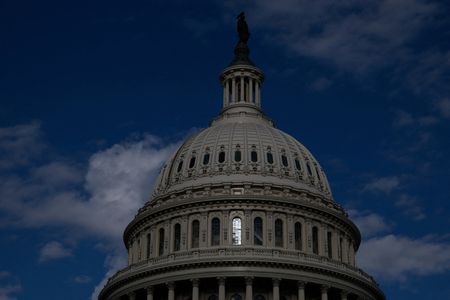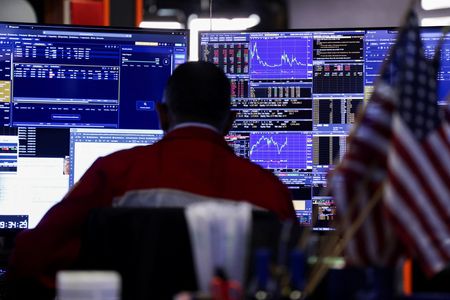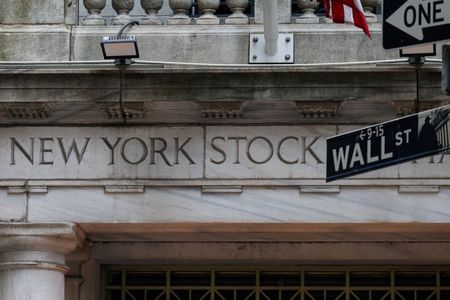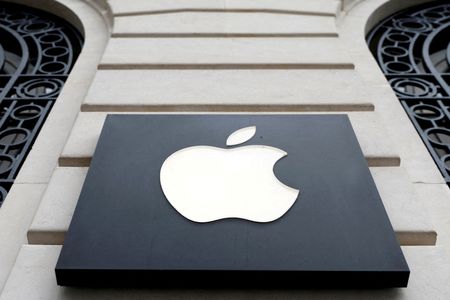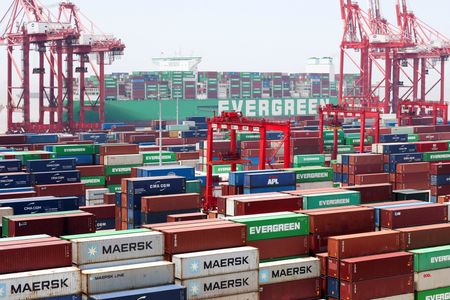By Jamie McGeever
ORLANDO, Florida (Reuters) -U.S. and world stocks leaped on Monday as hopes that the U.S. government shutdown could soon end sparked a tech-fueled relief rally, while the yen slumped after Japan’s Prime Minister Sanae Takaichi indicated her preference for looser fiscal and less hawkish monetary policy.
More on that below. In my column today I look at the role currency hedging played in delivering a surprise ‘win-win’ for the Trump administration this year – a weaker dollar, and a Wall Street boom. Could the same stars align next year?
If you have more time to read, here are a few articles I recommend to help you make sense of what happened in markets today.
1. US Senate compromise sets stage for end to governmentshutdown 2. Stock market hits speed bump but investors stay onbullish path 3. AI clouds up the economic dashboard: Mike Dolan 4. EXCLUSIVE-China starts work on easing rare earth exportrules but short of Trump hopes, sources say 5. Takaichi flags looser fiscal goal, urges BOJ rate hikecaution
Today’s Key Market Moves
* STOCKS: Wall Street up between 0.8% and 2.3%. SouthKorea up more than 3%, Italy more than 2% to new 18-year high. * SHARES/SECTORS: U.S. tech +2.7%, consumerdiscretionaries +1.5%, consumer staples -0.3%. Palantir +8.8%,Nvidia +5.8%. Roundhill ‘Mag 7’ ETF has biggest gain since May. * FX: Dollar index flat, but dollar/yen spikes above154.00. Yen is the big G10 FX decliner, Aussie the big gainer. * BONDS: U.S. yields up 4 bps at the short end as Dec Fedrate cut probability slips closer to 60%. Curve bear flattens. * COMMODITIES/METALS: Gold spikes 3%, oil up nearly 1%.
Today’s Talking Points
* Shutting down the shutdown
The end of the longest U.S. government shutdown in history is close at hand, it seems, and financial markets are breathing a big sigh of relief. At least stocks are – the dollar is flat and Treasury yields rose no more than four basis points.
Beyond the immediate ‘relief rally,’ is there much else markets can take from this? Other than the resumption of data collection and releases, perhaps not. Most of the lost economic output this quarter will be recouped the next. Maybe this just goes to show that investors are still more inclined to ‘buy the dip’ than ‘sell the rip.’
* Trump’s $2,000 dividend checks
U.S. President Donald Trump has floated the idea of sending most American households $2,000 ‘tariff dividend’ checks. Now, with an end to the government shutdown potentially in sight, and following a bruising bout of gubernatorial and mayoral elections, could he actually deliver?
There are plenty of hurdles, presumably including Congressional approval. And many analysts say it’s not a credible policy while inflation is sticky, growth is solid and the deficit is so wide. But it is an insight into how the administration views the economy – run it hot and ignore the deficits.
* US-China detente
U.S.-China relations appear to be thawing. Two Reuters exclusives in recent days reveal that Beijing is designing a new rare earth licensing regime that could speed up exports, and FBI Director Kash Patel was in China last week to discuss fentanyl and law enforcement issues.
It will be a long process, but it does look like both sides are putting the foundations of the trade deal framework agreed by Presidents Trump and Xi last month in place. And Washington will no doubt be pleased that Beijing’s daily dollar/yuan fixing rate continues to grind lower. Another reason to ‘buy the dip’?
Trump’s dollar balancing act may hinge on hedging
The Trump administration scored a surprise win-win this year, as Wall Street boomed while the dollar fizzled. But a repeat next year is unlikely as the root of that sweet spot, dollar hedging, may be missing.
A weaker exchange rate is central to President Trump and Treasury Secretary Scott Bessent’s vision of restoring the might of U.S. manufacturing, increasing U.S. exports, and narrowing the country’s huge trade deficit.
The administration got its wish this year, with the dollar index clocking its worst January-June period in more than half a century, plunging as much as 12% at one point, while the S&P 500 shrugged off the ‘Liberation Day’ tariff chaos in April and soared to new highs.
The key ingredient in this unusual mix was dollar hedging. Overseas investors baulked at Trump’s economic and foreign policy agendas early into his second term in office, but they still wanted exposure to the artificial intelligence-fueled equity boom. So they hoovered up U.S. stocks, but hedged the currency risk by selling the dollar via derivatives contracts.
PEAK HEDGING?
The dollar has been broadly steady since June, while Wall Street has moved ever higher, suggesting there may still be sufficient hedging activity capping the dollar’s upside.
In fact, more than 80% of U.S. equity inflow from abroad is now hedged, according to Deutsche Bank. If true, that suggests there’s not much scope to increase.
Of course, no official hedging data exists, nor any singular method to measure it, resulting in a wide range of estimates, with Deutsche Bank’s approximation at the top end.
Strategists at JPMorgan reckon hedging demand has cooled in recent months as the apocalyptic trade war fears of earlier this year have faded and the dollar has stabilized.
They analyze net inflows into U.S. equity exchange-traded funds domiciled abroad, assessing what percentage of this capital goes to currency-hedged versus unhedged ETFs.
There has been steady demand for both from foreign investors since July, but the flow in dollar terms has been significantly skewed to the much-larger pool of unhedged ETFs.
ON THE WANE
How will hedging demand shape up next year? If the world’s view of the dollar and the U.S. darkens as it did early this year, investors are likely to maintain high hedge ratios, limiting the dollar’s upside even if foreign buyers retain their appetite for Big Tech-related equities.
On the other hand, the AI-driven ‘U.S. exceptionalism’ narrative has re-emerged since mid-year. Just look at Nvidia’s recent $5 trillion valuation. If the U.S. economy outperforms next year, foreign investors may have little reason to hedge at all.
A Bank for International Settlements study in June concluded that “the relative importance of hedging may wane as a driver” for the dollar, and that the U.S. economic outlook is likely to weigh more heavily in investors’ minds moving forward.
POLICY PARADOX
How does this tie in with Trump’s economic agenda? This is where things get complicated.
While a softer greenback is at the core of Trump’s policy, it is also at odds with another administration goal for the coming year – attracting a tidal wave of record investment from overseas governments and corporations into the U.S. that Bessent claims will lift Main Street and Wall Street in tandem.
“Trillions and trillions of dollars (are) being poured back into our country by other countries and other places and people,” Trump told a business forum in Miami last week, claiming that he has already secured $18 trillion in pledged investment from abroad, which will allegedly rise to $21 trillion.
Even if these figures are heavily embellished, there remains a fundamental inconsistency, for Main Street at least. Huge capital inflows should, all else being equal, cause the dollar to appreciate.
Hedging is a key reason why the dollar has weakened so much this year even as investors ploughed cash into the U.S. stock market. If this drag on the dollar is removed, but significant capital inflows keep coming, the administration’s ‘America First’ industrial policy has a big problem.
What could move markets tomorrow?
* Japan trade, current account (September) * Bank of England’s Megan Greene speaks * UK employment, earnings (September) * Germany ZEW sentiment index (November) * Brazil inflation (October) * U.S. Federal Reserve Governor Michael Barr speaks
Want to receive Trading Day in your inbox every weekday morning? Sign up for my newsletter here.
Opinions expressed are those of the author. They do not reflect the views of Reuters News, which, under the Trust Principles, is committed to integrity, independence, and freedom from bias.
(By Jamie McGeever;)

